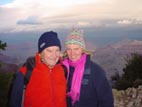The ancient pilgrim path from Rome to Santiago di Compostela in Spain, Via Francigena, runs close to our villa and this week we have walked 2 sections of it. It has taken us through beautiful countryside but more interestingly, the path is still paved with huge worn rocks and you find yourself thinking about the other feet that have passed this way over the centuries. There are also some fascinating churches, monasteries and abbeys on the route.
We spent a day at Volterra which has an extensive Etruscan museum. Everything I’ve ever read about them starts off with “Little is known about the Etruscans …….” But the museum seemed to provide quite a lot of information. They were in this part of Italy between about 900 BC and 400BC and the museum pieces indicate a very sophisticated society. The carvings on their burial urns depict well constructed boats, chariots and wagons, musicians playing a variety of instruments, a range of clothing styles and women reading. There were examples of beautiful gold jewelry made with fine precision and delicacy. On a number of our walks we have come upon small excavations in the middle of nowhere with signs to indicate they are Etruscan villages or houses. It seems strange to find something so ancient unattended and crudely signed. I guess there is just so much like this in Italy that they don’t have the resources to care for everything.
Last Saturday we went to a Festa del Vino in a neighbouring town. It was held at the local wine and olive cooperative – this is a place where small growers can bring their grapes and olives for processing – it looked as if they all go in together because there were HUGE vats of wine and olive oil everywhere in this building the size of an aircraft hanger. As soon as a barrel looked like running out, it was refilled using a petrol pump –style nozzle. There was no charge for entry or for any of the wine and it was refreshing to see no-one drinking to excess. I don’t think that would have been the case in Australia or England. We noticed that the locals go very easy on alcohol – when we’ve been to Sagra’s we’ve noticed that people drink more water than wine, often mixing them in a glass. It is the tourists that seem to overdo it at times. This week there was a terrible caraccident with 4 english holiday makers killed – the English driver survived – he was double the legal limit.
We spent another day in Siena – this time to take in a few of the main galleries and churches. We got an early start and were waiting on the steps of Museo dell ‘Opera del Duomo opened. It houses many of the statues that used to be on the exterior of the Cathedral and have been brought indoors to halt erosion – they have been replaced with replicas – many of them were carved by Pisano in the C13 and are amazingly detailed and lifelike. Best of all we enjoyed sitting and looking at Duccio’s Maesta – his Madonna and Child which used to be at the high altar in the Cathedral. On the other side are his scenes from the life of Christ – they are wonderful pieces of art and have an amazing effect on those who come to view them. In the midst of a busy tourist city, this gallery is hushed – 700 years on, Duccio’s work still has the power to create reverence and awe.
After the mandatory coffee and pastry, we went into the Cathedral – so many people that it was hard to get the sense of a working church. Tourist guides everywhere with their flocks. It is a majestic building but we’ll try to go there for a service before we leave to see it in a different light.
Following lunch we went in to the Baptistry then a hike across town to the Oratorio San Bernardino where there were a couple of small Duccio works. It was 6pm by then and we were museumed/churched out for the day.
Yesterday we had a lazy day – we need one every 4 or 5 days. We drove up to a small town in the hills about 15 minutes from home and wandered around and had coffee. So many beautiful little towns around here – once you get away from the main tourist drawcards, it is very tranquil. People manage to squeeze a vegetable garden, a few vines and some fruit trees into most unpromising looking places but they seem to thrive. We were talking today about the way that farming practices here must have been sustainable for thousands of years – the agricultural landscape had changed little. We wonder whether this will continue to be the case with mechanization, pesticides and fertilizers. We hope so. They have developed a system of Agritourism which is an attempt to keep farmers on the land. It is basically providing B&B accommodation during the tourist season on working farms. It gives the farmer an additional income stream while requiring him/her to continue farming the land.
I’ve been typing this with one eye on the TV where Tim Henman has just won a match at Queen’s and Nadal is now on court. We watched some of the French Open – it was on Europsport which is all in german and neither of us have enough of the language to make sense of it – hence with watch with the sound off.
skip to main |
skip to sidebar
